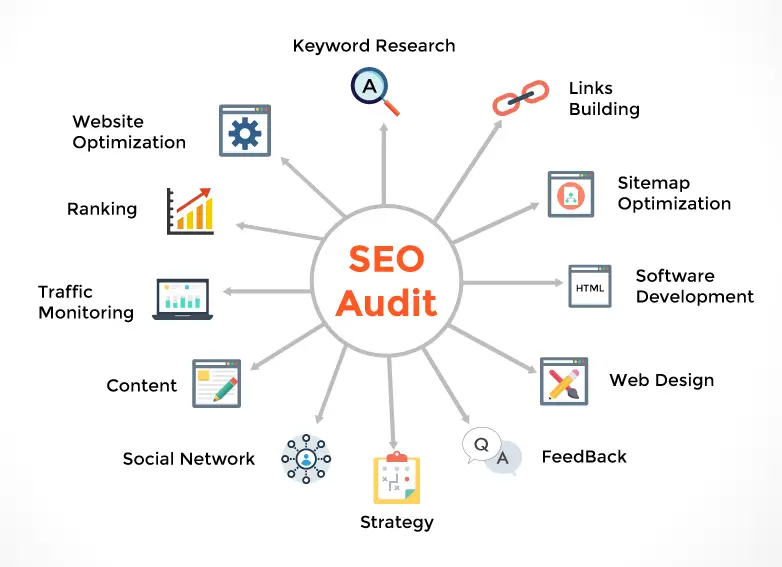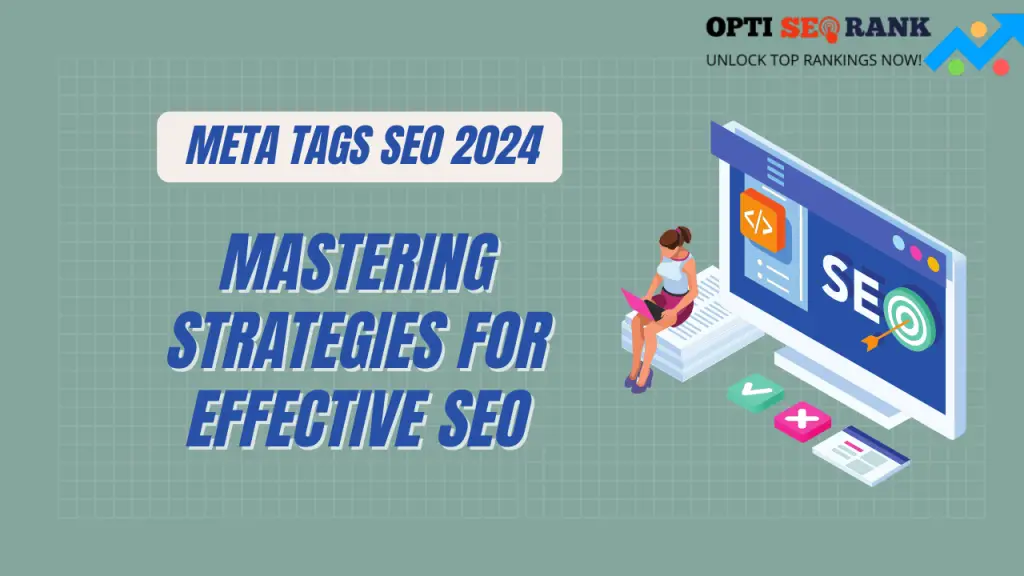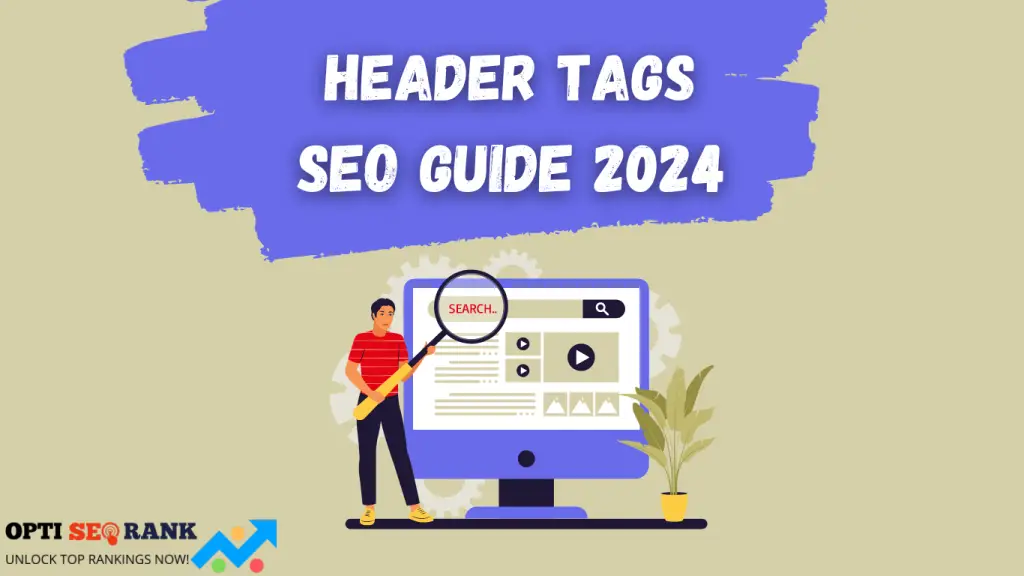SEO audits are essential for improving website performance and search engine ranking. They help identify issues and opportunities.
Conducting a thorough SEO audit involves examining various aspects of your website to ensure optimal performance and visibility. Key areas include technical SEO, on-page elements, and off-page factors. Technical SEO focuses on site speed, mobile-friendliness, and crawlability. On-page elements involve content quality, keyword usage, and meta tags.
Off-page factors encompass backlinks and social signals. A comprehensive approach ensures all aspects work together for better search engine rankings and user experience. Regular audits help keep your site updated and competitive. Investing time in SEO audits can lead to increased traffic, better user engagement, and higher conversion rates.
Introduction To Seo Audits

Understanding SEO audits is vital for any website’s success. An SEO audit is a comprehensive analysis of your website’s performance in search engines. It helps identify issues that could hinder your site from ranking well. This guide will explain the importance of SEO audits and their key benefits.
Importance Of Seo Audits
SEO audits play a crucial role in maintaining your website’s health. Regular audits ensure your site is optimized and free of errors. They can reveal hidden issues that affect your ranking. For instance, broken links, slow load times, and duplicate content. Addressing these issues can improve user experience and boost your search engine rankings.
Key Benefits
Conducting an SEO audit brings several benefits. Here are some key ones:
- Improved Search Rankings: Fixing issues found in audits helps your site rank higher.
- Better User Experience: A well-optimized site is easier to navigate and use.
- Increased Traffic: Higher rankings lead to more organic traffic.
- Actionable Insights: Audits provide valuable insights for future SEO strategies.
- Competitor Analysis: Understand how your site compares to competitors.
Here is a quick comparison of the benefits in a table format:
| Benefit | Description |
| Improved Search Rankings | Fixing issues improves your site’s search engine ranking. |
| Better User Experience | Optimized sites are easier to navigate and use. |
| Increased Traffic | Higher rankings lead to more organic traffic. |
| Actionable Insights | Provide valuable insights for future SEO strategies. |
| Competitor Analysis | Understand your standing compared to competitors. |
Technical Seo Components
Technical SEO is crucial for improving your website’s performance. It involves optimizing various backend elements. These elements help search engines crawl and index your site efficiently. Let’s dive into two important technical SEO components: site speed and mobile-friendliness.
Site Speed
Site speed impacts user experience and search rankings. A slow website frustrates visitors. Fast-loading sites rank higher on search engines.
Here are some key aspects to improve site speed:
- Optimize images: Use compressed images without losing quality.
- Minimize HTTP requests: Reduce the number of elements on your page.
- Enable browser caching: Store resources locally to reduce load times.
- Use a Content Delivery Network (CDN): Distribute content closer to users.
- Minify CSS, JavaScript, and HTML: Remove unnecessary code to speed up your site.
Mobile-friendliness
More people use mobile devices to access websites. Ensure your site is mobile-friendly.
Follow these tips for a mobile-friendly site:
- Responsive design: Your site should adapt to different screen sizes.
- Touch-friendly navigation: Make buttons and links easy to tap.
- Readable text: Use legible fonts and appropriate sizes.
- Fast mobile load times: Optimize for mobile speed.
Check your site’s mobile-friendliness with Google’s Mobile-Friendly Test. This tool provides a comprehensive analysis.
On-page Seo Elements

On-page SEO is crucial for better search engine ranking. It involves optimizing elements on your website. This ensures search engines understand your content. Let’s dive into some key on-page SEO elements.
Meta Tags
Meta tags are important for SEO. They tell search engines about your page. The two most important meta tags are:
- Title Tag: This is the title of your page. It appears in search results. Keep it under 60 characters.
- Meta Description: This is a short description of your page. It should be under 160 characters.
Use relevant keywords in your meta tags. This helps improve your page ranking.
Keyword Optimization
Keyword optimization is key for on-page SEO. It involves using relevant keywords in your content. Here are some tips:
- Keyword Research: Find the right keywords for your content. Use tools like Google Keyword Planner.
- Keyword Placement: Use keywords in your title, headings, and content. Do not overuse them.
- LSI Keywords: Use related keywords to support your main keyword. This helps search engines understand your content better.
Here is a table summarizing keyword optimization tips:
| Tip | Description |
| Keyword Research | Find relevant keywords for your content. |
| Keyword Placement | Use keywords in title, headings, and content. |
| LSI Keywords | Use related keywords to support main keyword. |
Optimize your on-page SEO elements for better search engine ranking.
Off-page Seo Factors
Understanding Off-Page SEO Factors is crucial for mastering a comprehensive SEO approach. These factors involve actions taken outside your website that impact your rankings. Let’s explore the key off-page SEO components.
Backlink Analysis
Backlink Analysis is essential for off-page SEO. Backlinks are links from other websites to yours. They act as votes of confidence. The more high-quality backlinks you have, the better your site ranks.
Here are some key points for backlink analysis:
- Quality over Quantity: High-quality links from reputable sites matter most.
- Relevance: Links from sites related to your niche are more valuable.
- Anchor Text: The clickable text in a hyperlink should be relevant to your keywords.
Use tools like Ahrefs or Moz to track your backlinks. Identify weak links and disavow them if necessary. Focus on building strong, relevant backlinks.
Social Signals
Social Signals refer to your website’s visibility on social media platforms. These include likes, shares, and comments. Social signals indicate your content’s popularity and relevance.
Here are some tips to enhance your social signals:
- Engage with Users: Respond to comments and engage with your audience.
- Share Quality Content: Post valuable and shareable content regularly.
- Use Hashtags: Use relevant hashtags to increase visibility.
Social media platforms like Facebook, Twitter, and LinkedIn can boost your SEO. Actively engage on these platforms to improve your social signals.
Content Quality Evaluation
Assessing the quality of your content is crucial for a successful SEO strategy. High-quality content can boost your rankings and attract more visitors. This section will guide you through evaluating content quality effectively.
Content Relevance
Content relevance ensures your material meets the needs of your audience. Use the following checklist to evaluate relevance:
- Target Audience: Identify your target audience.
- Keywords: Include relevant keywords naturally.
- Information: Provide accurate and up-to-date information.
- User Intent: Match your content to user search intent.
Relevance keeps users engaged and reduces bounce rates. Always align your content with the audience’s needs and interests.
Duplicate Content
Duplicate content can harm your SEO efforts. Search engines prefer unique content. Here are ways to identify and fix duplicate content:
- Use Tools: Use tools like Copyscape to find duplicates.
- Canonical Tags: Use canonical tags to specify the preferred version.
- 301 Redirects: Redirect duplicate pages to the original page.
Ensure every piece of content on your site is unique. Unique content improves search engine rankings and user experience.
User Experience Considerations
User experience (UX) is crucial for a successful website. It impacts how users interact with your site and influences their decisions. A well-designed UX can improve SEO rankings and user satisfaction. This guide covers two important aspects: site navigation and page layout.
Site Navigation
Site navigation helps users find information easily. A well-structured navigation menu guides visitors through your site. It enhances usability and keeps users engaged.
- Use clear and concise labels for menu items.
- Limit the number of menu items to avoid clutter.
- Include a search bar for quick access.
Here’s a simple example of a navigation menu:
HomeAboutServicesContact
Make sure your navigation is mobile-friendly. A responsive design ensures usability on all devices.
Page Layout
The page layout determines how information is presented. A clean layout improves readability and user engagement. Organize content logically and use visual hierarchy.
| Element | Best Practices |
| Headings | Use clear and descriptive headings. |
| Images | Optimize images for faster loading. |
| Whitespace | Use whitespace to avoid clutter. |
| Call-to-Action | Place CTAs prominently on the page. |
Consider these tips for a better page layout:
- Keep paragraphs short and focused.
- Use bullet points for easy reading.
- Highlight important keywords.
A well-designed page layout improves user experience and reduces bounce rates. Always test your layout across different devices and browsers.
Seo Tools And Resources
To master SEO audits, you need the right tools and resources. They help analyze, optimize, and improve your website. Understanding these tools is crucial for a successful SEO strategy. Let’s explore some popular tools and compare free vs. paid options.
Popular Seo Tools
Many tools can aid in your SEO journey. Here are a few of the most popular ones:
- Google Analytics: Tracks website traffic and user behavior.
- Google Search Console: Helps monitor and maintain your site’s presence in Google Search results.
- SEMrush: Offers comprehensive data on keywords, backlinks, and competitors.
- Ahrefs: Known for its robust backlink analysis features.
- Yoast SEO: A WordPress plugin for on-page optimization.
Free Vs. Paid Tools
Choosing between free and paid tools depends on your needs and budget. Here’s a comparison:
| Feature | Free Tools | Paid Tools |
| Cost | Free | Subscription-based |
| Data Depth | Basic | Advanced |
| Support | Limited | Extensive |
| Features | Essential | Comprehensive |
Free tools offer essential features for beginners. Paid tools provide advanced features and support, ideal for professionals.
Creating An Seo Audit Report
Crafting an SEO Audit Report is crucial for improving website performance. The report should be clear, concise, and actionable. It helps you identify strengths and weaknesses in your SEO strategy. This section will guide you through the essential components.
Key Metrics To Include
Your audit report should include several key metrics. These metrics help measure your website’s SEO performance.
| Metric | Description |
| Organic Traffic | Tracks the number of visitors from search engines. |
| Keyword Rankings | Shows your positions for target keywords. |
| Backlink Profile | Analyzes the quality and quantity of backlinks. |
| Page Speed | Measures the loading time of your website. |
| Mobile Usability | Checks if your site is mobile-friendly. |
Presenting Findings
Present your findings in a way that is easy to understand. Use clear headings and bullet points. Highlight the most important issues first.
- Summary of Key Findings: Provide a brief overview of your main findings.
- Detailed Analysis: Dive deeper into each key metric.
- Recommendations: Offer specific actions to improve your SEO.
Visual aids such as graphs and charts can make your report more engaging. They help illustrate trends and data points clearly.
Ensure your report is well-structured and easy to navigate. This makes it more useful for stakeholders and team members.
Frequently Asked Questions
How To Do A Comprehensive Seo Audit?
Conduct keyword research, analyze on-page SEO, check technical SEO, assess backlinks, and review user experience. Use SEO tools for accuracy.
How Can I Improve My Seo Audit?
Conduct keyword research, fix broken links, optimize meta tags, improve site speed, and ensure mobile-friendliness. Regularly update content.
What Makes A Good Seo Audit?
A good SEO audit includes keyword analysis, technical site review, content quality check, backlink assessment, and user experience evaluation.
Are Seo Audits Worth It?
Yes, SEO audits are worth it. They identify website issues, improve rankings, and boost organic traffic effectively.
Conclusion
Mastering SEO audits requires a strategic approach and attention to detail. Use this guide to enhance your website’s performance. Regular audits help identify and fix issues, improving search rankings. Stay proactive and informed to maintain a competitive edge. Consistent effort ensures long-term success in the ever-evolving digital landscape.



